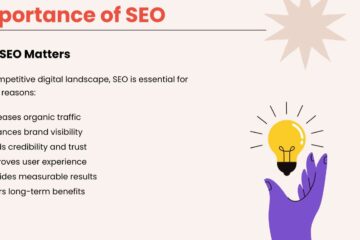In today’s digital era, website design is more than just aesthetics; it’s about creating a seamless user experience, enhancing performance, and driving conversions. As businesses shift online, having a professionally designed website has become essential for success. With the growing emphasis on responsive design, SEO optimization, and user-centric features, it’s vital to understand how effective web design can impact both user experience (UX) and business growth. In this blog, we will explore key strategies and best practices to ensure your website design stands out and delivers measurable results.
Future Web Design Trends: What’s Next for Websites in 2025 and Beyond
Responsive Website Design: Ensuring Accessibility Across Devices
Responsive web design is not optional—it’s a necessity. In an age where smartphones and tablets are integral to how we browse the internet, ensuring your website adapts to all screen sizes is crucial. A mobile-friendly design enhances user experience (UX), leading to higher retention rates and better SEO rankings. Websites that are optimized for mobile devices perform better in search engines, making them more likely to rank higher on Google.
Explore our website design services
User Experience (UX) Design: Crafting Seamless Navigation
Great UX design goes beyond just looks; it ensures visitors can easily find what they’re looking for. Intuitive navigation, fast load times, and clear calls-to-action (CTAs) are critical components of a seamless user experience. When users can navigate effortlessly and access relevant information quickly, they are more likely to stay longer, engage with your content, and return in the future. Additionally, search engines like Google consider UX an important ranking factor, rewarding sites that provide a smooth and satisfying experience with higher visibility in search results.
SEO-Optimized Website Design: Boosting Search Engine Rankings
An SEO-optimized website is one that has been designed with search engine algorithms in mind. From title tags and meta descriptions to clean URLs and mobile responsiveness, website design elements play a significant role in improving SEO rankings. A thoughtful and well-structured website design not only makes content easier to navigate but also helps search engines crawl and index pages efficiently. By incorporating fast load times, optimized image alt tags, and a clear content hierarchy, your site gains better visibility and higher search engine rankings. This user- and search-friendly design approach attracts more organic traffic, increases session duration, and ultimately strengthens your website’s domain authority and credibility online.
Content Strategy: Balancing Design and Informative Content
While beautiful website designs are important, content is still king in the digital landscape. A successful website design isn’t just about aesthetics—it’s about combining visual appeal with meaningful, informative content that resonates with your audience. Striking the right balance between engaging design elements and high-quality, SEO-optimized content creates a powerful user experience that retains visitors, reduces bounce rates, and drives conversions. An effective website design supports and enhances your content, guiding users through your site with clarity and purpose. When both design and content work in harmony, your website becomes a valuable tool for both users and search engines, improving visibility, authority, and overall performance.
The Future of Website Design: Trends to Watch in 2025
Conclusion:
To sum up, a successful website design incorporates responsive elements, superior user experience, SEO optimization, and compelling content. As businesses continue to rely heavily on their online presence, website design is not just a cosmetic upgrade but a strategic tool to enhance user satisfaction and drive growth. By following best practices in responsive web design, UX, and SEO optimization, businesses can ensure their websites are not only beautiful but also effective in ranking higher on search engines and engaging visitors.
Contact us for more informations




